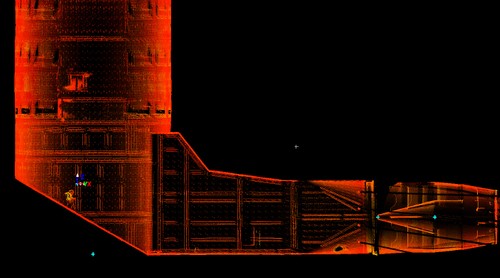
Laser Scanning Energy Facility - Engineering Solution for a Power Stack
Client Explanation: “We are progressing with liner replacement and need to make the changes now so it does not impact the ongoing schedule and completion date.” Dennis S. – Business Development Manager
Location: Atlanta, Georgia
Task: One of Georgia’s largest power-supply cooperatives requested TruePoint Laser Scanning’s engineering expertise for one of its power stacks. A stack, smokestack, exhaust stack or chimney is a tall vertical pipe or channel used by power plants to exhaust combustion gases into the air. TruePoint executed multiple mobilizations to achieve this client’s objectives. First to verify the plumbness of the stack itself, then to verify the alignment of the newly installed brackets that hold the baffles, and finally to verify that the retrofitted brackets would not bind the baffles.
Challenge: The client wanted to verify all of the brackets were correctly aligned before installing the baffles. Baffles are vanes or panels utilized to direct the flow of exhaust gas through the heated surfaces of a boiler. There are two layers of light gauge baffles that are slid into the stack from above. As this stack heats up, the baffles change length and must be capable of expansion. The buckling of the steel baffles brought into question the alignment of all supporting steel brackets and guides. In addition to alignment concerns of the supports, the roundness of the stack can cause further binding.
Solution: Using the Leica RTC360 laser scanner, TruePoint’s project manager 3D laser scanned the interior areas of the power stack, 6 levels of scaffolding and structural features of the stack brackets. TruePoint engineers used the point cloud data collected to create a series of plan sections to define roundness. 2D drawings were generated to detail alignment of guides projected across the diameter of the stack. These documents were used to help define design repairs that may be required. After repairs were made by the client, a laser scan was completed to verify guides would not bind the baffles. A final 3D solid model was also created to document the final support arrangement.
Deliverables: The client requested an AutoCAD overlay drawing for the lower stage baffles so they can lay in the outer baffles. They needed this to determine if the outer supports and guides needed to be moved to accommodate for thermal growth given the significant flatness at the D&E levels. TruePoint’s Technical Team delivered intensity map point cloud files, dimensioned 2d as-built documents, and AutoCAD Revit LOD 200 model with the structural elements of the baffle brackets mounted on the interior of the stack.
Added Value: Laser scanning was a safe and effective way to capture the necessary data of this power stack.
TruePoint has extensive experience 3D laser scanning for energy facilities, electric cooperatives, generating facilities, and generating plants. We have performed services for a diverse portfolio of electric, nuclear, natural gas, coal and hydroelectric corporations. We offer innovative engineering solutions for your business. For 3D laser scanning services in Atlanta, Georgia, call 404-665-7252 or email atlanta@truepointscanning.com.
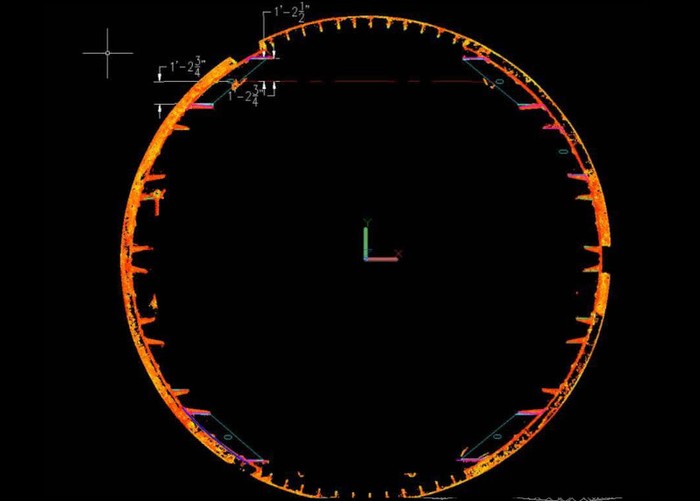
Example of plan section to define roundness.
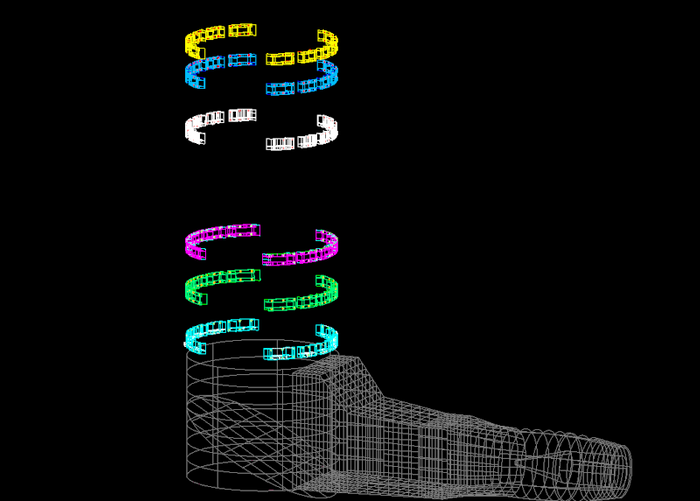
Wireframe with brackets documented.
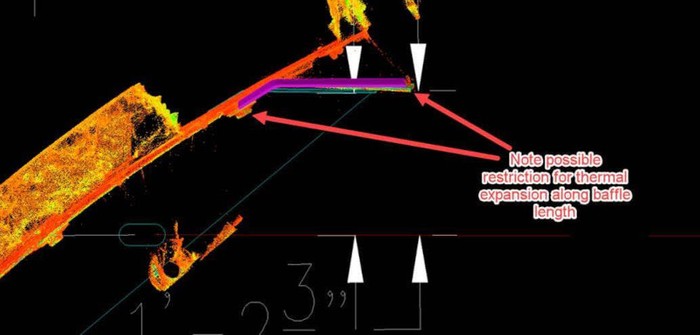
Dimensioning and call out areas that would interfere with the baffles.
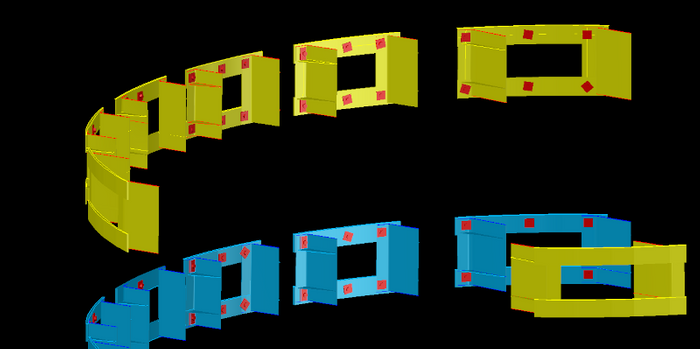
AutoCAD Revit LOD 200 model enlarged to show close-up of brackets.
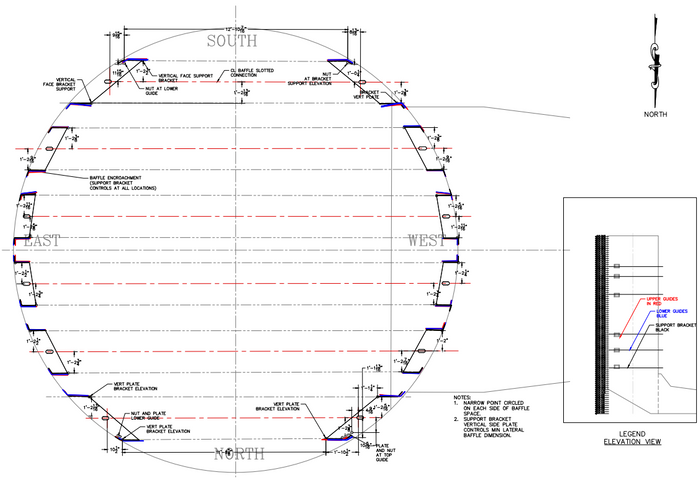
TruePoint engineers created a 2D plan drawing of the power stack with dimensions for the restrictions at the northern and southern most (lower) baffles.
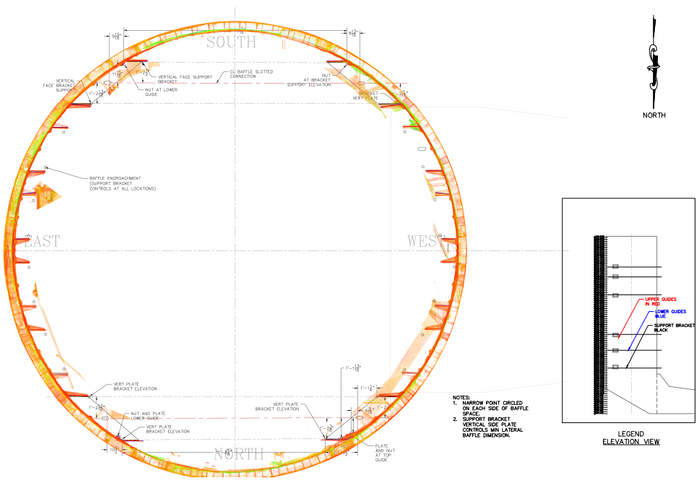
2D plan drawing of the baffle space and support bracket with point cloud overlay.

